The legend of Amelia Earhart is now, as legends tend to be, more speculation and rumor than supportable fact, and still quite popular in the American consciousness at least. I don’t need to tell anyone that she and navigator Fred Noonan (okay, some people didn’t know that bit) disappeared on July 2, 1937 while attempting to circumnavigate the globe by air, but the details of this deserve a healthy dose of critical thinking and skepticism, largely because numerous proposals – few deserve to be called, “theories” – have been forwarded regarding this disappearance, most of them quite frivolous. While this is going to be an inordinately long post, even for me, debunking all of the wild ideas would take a book – and indeed, has, several times over. For my part, I’m going to concentrate on one particular proposal which has gained serious media attention in the past few years, solely due to the efforts of one organization: that Earhart and Noonan actually made it to an island now called Nikumaroro, but at the time called Gardner. I intend to examine this idea in detail, based on reviewing several books and articles written by a few of the more conscientious and fact-driven researchers.
To begin with, let’s go over the status of flight and navigation at the time. In 1937, airline travel was still quite young, and most of the advances in determining location and course had not been developed yet. Most flights were done with visual cues, actually looking down at the ground for landmarks, and there were no regular cross-Pacific flights, by anyone. It had been done, as a proof-of-concept thing, and companies like Pan American were making semi-routine flights from California to Hawaii, and examining the feasibility of extending this to Australia. The only aircraft were piston-driven propeller models, not exactly speed demons, so the idea of doing a Pacific crossing in one go was ludicrous, from the standpoint of time involved, fuel, and navigation; the routes would have to hopscotch across various stops, of which the Pacific has few options. Thus, part of the feasibility studies were to determine where another airfield, on top of Hawaii, could be built as a stopover.
More importantly, telling where one was while over open ocean was challenging in itself. While aloft, a plane is riding in the air masses, whichever direction they may be going – while you could point the plane north and maintain this heading by compass, if the winds are blowing from the west, the plane will be carried eastward even while flying north, and end up to the northeast of its origin. There were of course no satellites at this time, and the only weather reports of any accuracy had to come from ships that were in the area; the Pacific is a vast place with the opportunity for countless different weather conditions along any crossing route. So while a course could be plotted with known wind direction and speed, most of the route would have unknown weather conditions which could skew a plot in any direction.
Par two of this equation is celestial navigation. Because the Earth rotates, the sun, moon, and stars all rise and set; moreover, they have specific positions in the sky when viewed at a given time from a given position on Earth. Using a sextant, a precise compass, and with accurate time-keeping, one’s position can be determined to a fair degree of accuracy, and this is how ship navigation took place for centuries. The sun is the second weakest link in this, since its glare prevents it from being used with precision except right at sunrise, and then it can only provide a line perpendicular to its path ‘across the sky,’ a line where sunrise occurs at the same time throughout. But with the moon and stars, a much more precise location can be determined – within a few dozen kilometers, at least. The weakest link in this, though, is that you have to be able to see any of these, so overcast skies will completely disable this method.
Part three is radio navigation, which in 1937 was still quite new, and few pilots knew it in detail – most of the experience with this had come from the military. With a direction-finding radio, a loop antenna could be turned until a radio signal emitted from a known location became the strongest, the loop producing a variable signal strength depending on which way it was facing. Obtain the strongest signal, know the orientation of the loop, and the originating station will lie in that direction – actually, in one of two opposing directions, since the loop will receive from both sides, so knowing which side it was receiving the signal from could not be determined by radio alone, but given any other clues, usually it wasn’t hard to pin down the correct one.
What was missing from this method was any manner of determining distance, and the peculiar properties of different wavelengths that could produce dead areas, called ‘skip zones.’ Radio waves work fine in a line-of-sight manner, but once over the horizon, it is possible to lose the signal, depending on wavelength. It could also depend on daylight, since the sun’s energy would charge the atmosphere and interfere with the radio signal. And then there’s the reflection of the signal off of the ionosphere, which could provide a much more distant carrier wave, well over the horizon, but this reflection wouldn’t usually pick up until much further away than the loss of direct signal from passing over the horizon. So there would be a circle of direct signal that could be received from a sender, and then a dead skip zone, and then the signal could be reobtained outside of this. Due to atmospheric conditions, the strength of signal is too variable to count on as a rough indication of distance.
Earhart herself was largely a visual and instrument flyer, able to navigate with known wind conditions and airspeed, compass and visual clues. Fred Noonan was brought along because of his navigational experience with Pan American, often bringing their passenger clippers across the Pacific to Hawaii. He had some experience with radio navigation, but his strength was in celestial navigation, and by all accounts he was very dependable in this regard. Earhart had little experience with either radio or celestial navigation, and for the bulk of her flying experience, including the preceding hops in this round-the-world flight, this was sufficient.
Without going into too much detail, this was where the flight failed. Leaving Lae, New Guinea for the longest over-water stretch yet, Earhart and Noonan set out for a minuscule speck of land called Howland Island, deep in the Pacific and very isolated from just about everything else, roughly halfway between New Guinea and Hawaii. Flight time was expected to be roughly 21 hours in the air, most of this over open water far from landfall, visual contacts, and even radio stations. Howland was, and still is, an undeveloped, unremarkable, absolute nothing of an island about 1/4 the size of New York City’s Central Park – the military, upon urging from DC, had bulldozed a rough runway, dropped off sufficient fuel for the next leg to Hawaii, and manned a basic direction-finding receiver on the island, while nearby sat the Coast Guard cutter Itasca, there to guide Earhart and Noonan’s Lockheed Electra in by radio when it got close enough to communicate with.
Long story short: Earhart could make out almost no communication attempts from the Itasca. The direction-finding station on Howland could not lock onto her signal. She was unable to obtain a visual lock onto the Itasca, even with it producing a thick column of signal smoke. The Itasca could hear her various reports, including that she was low on fuel and that she was running north and south on “line 157-337.” When no further signals were received and they were well past the time of arrival, the search began.
Earhart’s and Noonan’s successful navigation to Howland depended on accurate timekeeping, accurate wind conditions, and both the ability to check position celestially and to lock onto the radio signal from the Itasca once they got close. It was, by far, the most dangerous leg of the journey to that point, to be exceeded only by the leg from Howland to Hawaii immediately after. Radio reports from Earhart indicated that at least a portion of their journey was taken in overcast conditions, so no celestial confirmation of position was possible at those times. Noonan was acting on a weather report that had winds listed ten knots slower than those measured by ships in the area (not, however, communicated to any weather service) – thus, determining position by airspeed, compass heading, and wind strength and heading were likely off by ten nautical miles every hour. And when finally in range, Earhart was unable to lock onto a signal to home in to Howland. It is unclear why this might have been, though there’s plenty of speculation, but the consensus is that the Electra ran out of fuel and ditched into the ocean well short of Howland Island, and even if it was brought in smoothly onto the water and managed to float for a while, it sank before any rescue attempts located it. Given the huge expanse of open water where it might have gone down, and no indication of direction or distance obtained from radio signals, this is hardly surprising.
Now we get to the recent claims of where the Electra ended up. The International Group for Historic Aircraft Recovery (TIGHAR) has claimed that Earhart, when unable to locate Howland, piloted the Electra southeast of Howland to Gardner Island, now called Nikumaroro. There, they successfully landed and lived for a period of time on the island before dying of exposure or starvation.
Let’s pause here to examine the area, and this would be a good time to bring up the mapping service of your choice. Earhart and Noonan departed from Lae, New Guinea (6°44’15.97″S 147° 0’3.98″E) to fly a straight-line, direct route to Howland Island (0°48’39.06″N 176°36’57.35″W – if those coordinates seem odd, yes, the flight crossed both the equator and the international dateline, pretty much simultaneously.) This was a distance of over 4,100 kilometers, or 2,500 miles. TIGHAR, however, claims they made it to Gardner/Nikumaroro instead (4°40’4.05″S 174°31’41.73″W,) about 650 kilometers (400 miles) to the south-southeast, and a solid 10° off of the track towards Howland – this might not seem like much, but to a pilot it’s a huge difference, especially over such a long flight (obviously, since it would result in being 650 kilometers out of position.) As a comparison, it’s close to leaving Los Angeles for a flight to New York City, but ending up in North Carolina.
So, how does TIGHAR explain the Electra getting so far away, so far off course?
To begin with, they say that Nikumaroro lies on that same line of position reported in the last message, 157-337. This is a compass bearing in degrees, counting 0 (or 360) as true north, 180 as south, so it indicates a line running north-northwest and south-southeast. This corresponds with the position line that Noonan could have obtained at sunrise, since it runs at right-angles to the sun’s compass bearing, and would be the only position able to be obtained from that celestial body. Thus, unable to locate Howland on that track, Earhart followed it to Gardner/Nikumaroro instead.
There are three serious flaws to this idea. The first is that, if they were unable to find Howland on that line, why the hell would they think they could find Nikumaroro, much further off, on the same line? And if the line was wrong, it wouldn’t help them find Nikumaroro any more than it would have helped them find Howland.
Second, this is a flight of between three and four hours, straight line, depending on power settings/velocity. Undertaken when the Electra was reported as already being low on fuel. To an island with unknown landing properties, quite possibly not even charted on the maps that were carried in the aircraft, and far away from the one source of rescue that was in the area, the cutter Itasca waiting at Howland. Nor did Earhart give the faintest radio intention of performing this little stunt. Right.
And finally, when navigation has failed to bring a pilot to their destination, obviously something is wrong, but perhaps not too wrong. Searching within a widening pattern – the line Earhart admitted to flying along, or a circle, or a grid – is what any reasonable, experienced person would do. Failing that, they would backtrack to the last known position, which was likely quite far away on the return path to Lae. But setting off on a new journey when one doesn’t even know where one is is sheer idiocy. Earhart, despite many opinions otherwise, was a highly-experienced and highly-accomplished pilot, on the final leg of a world-circling flight. While fatigue or mistaken impressions might possibly contribute to bad decisions, this seems beyond ludicrous, and hardly a convincing explanation of how they could have ended up on Nikumaroro.
But, could they have been off track, far south of Howland when they thought they were north, and more-or-less found Nikumaroro when doing the search pattern for Howland?
This is only fractionally less unlikely than setting off in search of the island directly. First off, Earhart had working compasses in the aircraft and knew how to maintain a heading. Noonan was checking their position periodically by celestial means. They even radioed a report about spotting a ship while roughly halfway to their destination, giving strong indications that they were directly on course at that point. But during the night, they entered overcast conditions, as indicated by hourly broadcasts of their progress – this would have prevented Noonan from confirming their position, though it would have had no effect on Earhart’s compass bearing. Thus, to get so far off position, they would have had to have encountered strong winds that carried them off course, of a strength and direction that they were unaware of (in a plane, turbulence can be felt, but prevailing winds give no indication of their presence since the plane rides within them, unless the pilot can closely spot their drift off course by watching landmarks – something that is not going to happen over open ocean.) Had these winds been constant for the entire flight, they would have had to have been over six knots directly along that position line, thus originating from the north-northwest at a bearing of 337. Had they sprung up any time later in the flight, they would have had to have been commensurately stronger. If they weren’t on or close to that specific bearing, they would also have affected the Electra’s forward progress, either advancing or retarding it, and thus putting it off of the position line anyway. In fact, this is supposed to have been one of the key factors in the loss of the plane, since the wind was ten knots stronger than what Noonan believed – only, the prevailing winds were from the south-southeast. This would have pushed the Electra further from Nikumaroro, not closer. And since the Itasca reported overcast cloud conditions in that direction, this has further support, also preventing Noonan from taking a sun reading and Earhart from spotting Howland, the Itasca, or the signal smoke.
These cloud conditions also throw some further questions into the reconstruction of what went wrong. Had they remained overcast, Noonan could not have obtained a line of position, and could only have produced one by dead reckoning – compass bearing and speed against prevailing winds, which he believed were different. This could easily have put them well off course. However, later in the flight Earhart reported the conditions as partly cloudy, and the Itasca reported clear skies in their vicinity, the overcast being some distance to the north and west. Even with overcast, if the cloud cover does not extend well over the horizon, a sun bearing might be taken at sunrise as the light comes from beneath the cloud deck, even if it rises into it soon afterward. And the Electra was due to be closing in on Howland right at sunrise. So it remains unclear whether they had a firm line of position (and were perhaps well north of Howland even while on that line,) or only supposed they were on that line by estimation, being well short because of the winds. The likelihood of being well south and within easy reach of Nikumaroro is not backed by any evidence, however, and contradicted by several points.
And one further as well. As Earhart’s messages were received by the Itasca during her approach and search for the island or cutter, the signal strength grew commensurately, the last transmission recorded being at maximum strength, something unlikely to happen had they been 650 klicks or so south of that position. While atmospheric reflection might contribute to this, producing an anomalous signal strength out of proportion to distance, it should be noted that this did not occur at any other point, even though Earhart was transmitting hourly updates routinely. We are faced with what could have happened, as a bare possibility, but that remains the only evidence in support of the proposed scenario of the Electra reaching Nikumaroro, while both real evidence and likely actions argue directly against it.
Now we come to TIGHAR’s physical evidence, which comprise the primary reasoning behind the idea that the Electra reached Nikumaroro. There are several artifacts discovered on the island itself, but the ones usually paraded through the press are the shoe, the jar, and the sheet of aircraft aluminum. Let’s take a look at these individually.
The shoe. In 1991, fragments of an old shoe were found on Nimumaroro, later identified as being a woman’s shoe of a certain type. While not definitively matched to anything Amelia is documented as wearing or having owned, the type of shoe has not been specifically ruled out, either (by being a size far from what she’d wear, or a man’s shoe, etc.) There’s not a lot else to say about this item, except for what’s covered in the details of the island below.
The jar. Fragments of a glass jar were found on the island as well, of a type matching a jar used for freckle cream on or around 1937 – and Earhart had freckles. Could this be Earhart’s jar of freckle cream lost from the wreckage of the plane?
Well, there are more than a few things wrong with this idea. Notably, when the fragments were matched against an antique jar known to have been used for freckle cream, the most obvious difference was that the found artifact was clear glass, while the freckle cream one was opaque white. And there’s a distinct reason for this, the same reason why so many glass receptacles today are opaque: the contents were sensitive to degradation by UV radiation, i.e., sunlight. The practice of making uniquely-shaped jars and bottles for a specific product is relatively recent, having come about with mass-production and a market big enough to justify cosmetic and food manufacturers commissioning their own run (or maintaining their own glass manufacturing.) Before this, however, glass manufacturers simply offered types of jars, and companies would purchase a size and shape appropriate to their uses and slap their own label onto it, which still continues to this day.
TIGHAR, it must be noted, had some tests run on the jar for mercury residue, mercury being a known ingredient of the freckle cream and capable of remaining behind in trace amounts through the weathering that the jar would have gone through in the intervening decades. These tests did come back positive, ostensibly a sign of support – if we ignore the sign of contradiction from the color of the glass, as well as the bare fact that plenty of cosmetic substances contained mercury back then (the long-term retention and adverse affect of mercury on health also being a relatively recent discovery,) and that the source of the traces could have come at any time since 1937.
It also should be noted that, given all of the items left off or specifically removed from the plane to save weight, including an emergency, battery-operated transmitter (more on this in a moment,) and a trailing-wire antenna which would have greatly increased their radio reception, the idea of Earhart finding it necessary to bring along her face cream is, to be kind, rather farfetched. We even have this line directly from Earhart during the flight itself, taken from a press release from her husband:
Fred Noonan and I have worked very hard in the last two days repacking the plane and eliminating every unessential. We have discarded as much personal property as we can decently get along without, and henceforth propose to travel lighter than before. I have retained only one briefcase in which are my papers as well as my extra clothing and tooth-brush. (Author’s italics.)
Source: Extract from Washington Star, Saturday, July 3, 1937, by Amelia Earhart, wireless to the Star from Lae, New Guinea, July 1, as quoted in Exhibition No. 4, Earhart’s Flight Into Yesterday: The Facts without the Fiction, by Laurance Safford [see bottom]
Given all of that, it’s pretty hard to tie the jar to the flight in any manner.
The piece of aircraft. This is one of the most compelling traits in support of the theory, or so it is presented repeatedly in the media, anyway. On one of several expeditions to the island, TIGHAR discovered a 19×23 inch piece of sheet aluminum, aircraft grade, and possessing the rivet holes where it had been attached to a frame. TIGHAR has been repeatedly and enthusiastically pointing out that it’s possible it was a sheet used to close a window in the Electra for a modification made by Earhart and Noonan for the flight.
Now, the reasoning behind this deserves a lot of examination. First off, the piece has been ruled out as being from the factory-built body of the Electra itself, by reasons of metallurgical tests and the rivet pattern not matching that of Lockheed’s. But the closing of the window is another matter. The Electra originally possessed a starboard (right) side window at the rear of the cabin, opposite the entry door, back by Noonan’s navigation station, but this was closed off before the flight for unknown reasons (curiously, because it would have been another option for Noonan to use for celestial navigation.) This was not a factory option, and no records or drawings exist to show how the modification was achieved – what kind of bracing, how it was affixed, and so on. But since it was made after the production of the Electra, it would not necessarily have matched the other metal used in the fuselage.
Which starts to bring up how far we have to reach to tie this in with the Electra at all. The metallurgical tests showed that not only did the found artifact (labeled “2-2-V-1” by TIGHAR) fail to match the type of metal used in the Electra, it failed to match any other aircraft manufactured in the US from that timeframe. Aircraft manufacturers did not tinker with their alloys willy-nilly, since this could affect the integrity and performance of the aircraft, so most were made of the same grade of aluminum throughout, for years. The notable difference in composition tells us that two scenarios are the most likely explanation: 1) that the piece found by TIGHAR came from a later period (and the change in available metals post-war makes this quite likely); or 2) that the aluminum was not of US origin. Both, of course, completely rule out the sheet belonging to the Electra in any form.
Also worth noting is how many times TIGHAR has attempted to place this piece of aluminum someplace on the Electra. In other words, they did not find a piece of evidence that pointed towards Earhart’s flight; they found a sheet of aluminum that they have been trying to make fit their scenario. That’s not how decent investigations are run, and nothing at all approaching objectivity. Moreover, the amount of times that this approach has failed, for this single piece of metal alone, is telling all by itself. Now, TIGHAR has apparently settled on the idea (paraded repeatedly through their press reports) that their artifact is an object that cannot be proven or disproven as being from the Electra. Well, that’s certainly useful.
There are a few other items that have been brought forth as evidence at different times, among them some bones discovered on the island – which have subsequently disappeared before definitive tests could be performed, but were alternately attributed by various physicians as being a woman of European descent, or impossible to distinguish between human or sea turtle. The initial find which prompted the consideration of Nikumaroro as a landing spot for Earhart and Noonan was a sextant box, which has since proven unlikely to be anything Noonan would have used.
But, given these various items on such a remote island, aren’t they, together, rather compelling to say that the Electra made it to Nikumaroro? And this all depends on what one’s impression of the island truly is, because it’s not at all how it’s usually presented in the media.
So let’s look at Nikumaroro Island. It’s a coral atoll, little more than outline around an extensive lagoon, and the only place where an Electra could land would be the beach edge. But the idea that this was a remote, uninhabited island with no trace of humans to be found is not at all the reality. At the time of Earhart’s disappearance, far-reaching search planes actually overflew the island, finding the remains of a settlement thereon, which they buzzed to try and provoke any activity from (being unable to land) but seeing no activity. On the southwest shore, however, lay the remains of a tramp steamer that had run aground on the coral reef. So, pristine and untouched it was not, and any artifacts on the island easily had a source other than Earhart’s flight.
Worse, from 1938 to 1941, there was a British colonial supervisor living on the island, as well an excess of 600 settlers at times, in the efforts to foster greater colonization of it and several other of the Phoenix Island group. It is not known whether he was self-conscious about his freckles, however…
And then, we have a seaplane base that operated on Canton (now Kanton) Island from 1941-1965. Nikumaroro is 378 Km (235 Mi) southwest of Canton, slightly over half the distance from Howland but, more notably, almost directly in line with the path of the regular seaplane traffic from Sydney and New Zealand that utilized it during that period. Not to mention that this is the central Pacific, which saw extensive air battle activity throughout World War II and is liberally dotted with the detritus of these engagements. TIGHAR itself notes 38 different aircraft documented as lost in the area, with an untold number (for instance, from the Japanese Imperial Navy) that might never have been documented.
Thus, Nikumaroro has numerous sources of artifacts at its disposal, and so the question becomes not how anything found on the island could have gotten there, but how to determine the provenance of the countless items that are found there. Bear in mind that if, for instance, the shoe could be definitively proven to be a type Earhart was photographed wearing, or the jar proven to be something that was carried on the plane, neither one were the sole (a ha ha) examples manufactured, so they would certainly strengthen the idea, but again, given all of the possible sources over a period of 50-some years, they could not constitute proof. However, we’re quite far short of that point.
TIGHAR has taken a further interesting stance on this. They have quite often maintained the standpoint that the Electra successfully landed on Nikumaroro, despite the lack of a finished surface of any kind, even though there remains the consideration that the plane ditched someplace offshore, perhaps an unknown distance away, and such artifacts were washed ashore in storms. As near as I have been able to determine, this is because they are claiming two of the many radio messages received long after the disappearance of the flight could have been sent by Earhart. Notably, the Electra only had a factory-installed transmitter, meaning that it ran only on the power from the engines in operation, and not on batteries – without a running engine (which would certainly be the case of any plane ditched at sea, even if it remained intact and floating,) there would be no radio transmissions. This is the contingency that the emergency transmitter would have served in, had it not been left behind in the interests of saving weight.
Any transmissions from long after the last signal received by the Itasca have been largely ignored by most researchers, with good reason: most of them were in morse, which Earhart wasn’t very proficient in, and the morse key had been removed from the aircraft as well, leaving them with only voice communications. This may seem odd to us now, but a morse signal was stronger, needing no modulation to carry intonations, and could carry much farther with more clarity – it remained a requirement of amateur radio operators even well into the 1970s when I myself had studied to obtain a license. These transmissions are openly considered hoaxes, and of course the voice of a well-known celebrity is much harder to mimic than just morse transmissions. It is unfortunate that, during the initial search period, the Itasca was kept busy chasing down several of these because almost no one knew that the morse key was missing from the aircraft (one of many examples of the bad communications and planning for this leg of the trip.) It should be noted that keying the transmitter (opening the microphone to transmit) can be used as a stand-in for a morse key, but weakly, since it only opens the channel to background noise and static, far less distinct than a morse key.
TIGHAR has a curious take on this. In evaluating the various transmissions received after the plane was assumed to have gone down, they managed to rule out numerous signals as spurious through various methods, establishing how easy it was to be mistaken about signals (and thus demonstrating a very high likelihood of hoax transmissions from other radio operators in a very large area of the Pacific,) but allowed how two signals could have come from Nikumaroro:
But this analysis also has shown that the signal heard at Nauru Island on July 3rd and the signals heard by Navy Radio Tutuila on July 5th, could have originated from NR16020 at Gardner Island.
Therefore, the possibility that Earhart successfully landed on Gardner Island cannot be ruled out by these results.
[Source]
Note that the July 3rd signal intercepted at Nauru was unintelligible, though possibly a female’s voice, and the July 5th intercept by Tutuila was only a series of dashes. Thus, also quite easy to hoax.
This is where the skeptical perspective comes in – and, in some opinions, ruins everything. Decent investigations do not settle on a hypothesis and then see what can be made to fit. Instead, they take all of the evidence and see where it leads. Given a large number of spurious transmissions, the inability to rule out two of them as spurious does not actually lend weight to the hypothesis – it just fails to deny it. We can just as easily claim a hypothesis that those two signals were hoaxes, and are unable to rule that out either. If it can be used both ways, it’s not evidence of either.
Here’s another quote from the TIGHAR site, the same radio details page as the previous quote:
7). It can be concluded from steps 1 through 6 above that the Itasca heard no signals from Earhart after 2013 GMT because: (a) she did not transmit on 6210 kHz following her 2013 GMT signal; (b) she was too far away at 2115 GMT for her signal to be heard on 3105 kHz; and (c) she was too far from Itasca at 2215 GMT for her signal to be heard on either frequency. It also can be concluded that Earhart could have reached Gardner between 2134 GMT and 2211 GMT at 115 knots ground speed. So the possibility of safe arrival at Gardner cannot be ruled out on the basis of these findings. On the other hand, these findings do not rule out the possibility that Earhart simply stopped transmitting after 2013 GMT, or that she encountered a sudden catastrophic event causing loss of the aircraft before she could send another signal.
[Source]
Notably, they have worked very hard to try and establish how the lack of signals could point to a safe landing on a tiny island, and then add in the admission that no signals being received might have been because none were sent – the Electra wasn’t transmitting due to a ditched landing or a crash, anywhere in the thousands of square kilometers of ocean that fail to support their theory in the slightest.
In fact, the entire theory of Earhart and Noonan reaching Nikumaroro is riddled with what’s possible, but nothing whatsoever of either what’s likely or what’s indicative. Let’s take a tally:
If the winds were completely in the opposite direction and if they were much stronger than recorded by any ship in the area and if Noonan obtained a successful sighting at sunrise for a bearing and if the Electra had enough fuel and if a successful landing was made on Nikumaroro and if the patch on the window was of a specific grade of aluminum not used by any known manufacturer and if the Electra was swept from the beach in the week before the search plane buzzed the island and if Earhart and/or Noonan failed to respond to the same plane and if the evidence of this whole landing and subsequent survival vanished completely before the British supervisor took residence and if Earhart had brought along her freckle cream and if the shoes matched and if the portions of the plane were returned by subsequent storms, then TIGHAR may not be chasing ghosts.
As the post title implies, the case relies entirely on these ifs, because there’s no solid evidence at all. There’s a secondary meaning too, in that, if there’s a limited supply of “ifs” available, we’ve probably used them all up. But the old trick of claiming that anything is possible is a rather crude attempt to weigh the odds in a distinctly inaccurate manner. Should you ask your doctor about your chance of having HIV, and he knows it’s a .001% chance but tells you only, “It’s possible,” he’s correct, but not exactly giving you useful information, is he? In fact, you’d probably have pretty good grounds for a lawsuit over unnecessary stress and suffering. Moreover, in many circumstances the admission of something being ‘possible’ doesn’t actually make it so at all – we simply don’t know enough to rule it as impossible. ‘Possible,’ in such cases, is a default state of our ignorance – not actually positive, just not negative.
If we, however, try to assign probability to all of those ifs above, we arrive at a likelihood so abysmally low that favoring it is, to be blunt, wildly irrational. People are prompted by their hopes and rationalizations into buying lottery tickets all the time, but this is much worse: it’s akin to spending hundreds of thousands of dollars to purchase just one ticket. Notably, it is not exactly a privately-funded endeavor, since TIGHAR is actively soliciting donations to fund every expedition it takes out to this lovely little south Pacific island – as I sit here looking at TIGHAR’s home page with several prominent links to allow one to contribute, there is a photo of the elaborate sailing yacht they will be taking on the upcoming expedition…
And that’s another part of critical thinking. Why would TIGHAR be promoting so much effort for such a long shot at finding out where the Electra wound up? Why, indeed…
I will be fair: a significant amount of information regarding their artifacts and reasoning and how poorly it can be tied to Earhart can actually be found right on their site. But there’s two significant parts of this. The first is, you have to read through their site, hundreds of pages of stuff, to generate your own overview of the points they use as evidence. The second is, you have to realize that the unbridled optimism that is found throughout, and throughout just about every mention of their efforts that occurs in the press, does not in any way reflect the improbabilities of their proposed sequence of events for the loss of the flight. This proposed flight plan, the very first link on their section regarding Earhart, shows how it could have happened, supposedly. I have yet to find any mention of why they think the flight deflected south into the prevailing winds, nor why Earhart and Noonan would then follow this line ridiculously farther south to reach Nikumaroro, or what those plotted direction-finding radio signals were taken from; bear in mind that DF was still in its infancy and couldn’t be that accurate, most of those plots were taken across damn near half of the Pacific Ocean, and that even if accurate the signals could have come from anywhere along those lines plotted, as well as in the opposite direction from the receiving station. I have only found mention of two signals on their site, quoted above, neither of which obtained any bearing at all. Meanwhile, the countless ships and aircraft that mounted the search around Howland, much closer than any of those radio plots, received nothing at all. But this didn’t stop TIGHAR from labeling their plot as “probable,” curiously enough.
This also gives some indication why paying attention to current media isn’t very useful. While caveats can be found on TIGHAR’s site, usually well behind their proposed ideas of what happened, somehow none of them ever make it into what the press reports about them – I’ll leave you to speculate on whose fault that might be. It is quite safe to say, however, that the hype that’s been appearing in no way represents any reasonable assumptions.
We also come back to the inordinately large number of ideas about what happened – not to give them any attention at all, but to point out that they can only exist because there are far too many variables in what we know about the flight. Selecting any one set without establishing a firm probability for it is only wishful thinking – we’re back to that lottery idea again.
Here’s what’s amusing about all of it: this isn’t exactly a mystery. The flight was a tricky and dangerous thing, and if anything at all went wrong throughout most of it, the Electra would go down far from any possibility of being found. The preparations, communication, fallback options, and radio navigation experience all could have been better. Winds aloft and actual ground speed remained indeterminable without landmarks or celestial navigation. It was a big risk, and it failed. It’s not exactly surprising.
Amelia Earhart gained a significant reputation, largely from press attention; the women’s rights movement was active, and she was accomplishing a lot in a male-dominated field. She was an experienced pilot by most accounts, but experienced in the type of flying necessary for this excursion? No. Such distinctions are crucial. Yet with the emphasis on being this remarkable person, and perhaps the protective idea we retain over women doing difficult things, the idea of her loss, and especially her failure, becomes a difficult thing to accept – fed by the fact that she remains newsworthy to this day, so if we keep hearing about her, there must be something to it all, right? And thus group-think creates a big mystery from what was a hazardous undertaking with inadequate preparation – the same kind of thing that happens all of the time. Judge Crater was in a safe environment among plenty of witnesses, by extension being exponentially more mysterious, but we don’t hear about him every couple of years in the media, and so it’s not that big a deal, apparently.
And so, with all that, I’m done – while it’s been interesting to see how badly the facts of the missing flight can be reinterpreted and mangled, there really is no new information to be had, and until someone actually pulls up a part of an Electra with an ID plaque on it, it’s not worth any more of my time.
Sources and other links
Earhart’s Flight Into Yesterday: The Facts without the Fiction, by Captain Laurance Safford with Cameron A. Warren and Robert R. Payne.
Amelia Earhart: the myth and the reality, by Dick Strippel
Researching Amelia: A detailed summary for the serious researcher into the disappearance of Amelia Earhart, an article in the November 1995 issue of Air Classics magazine, by Richard G. Strippel (same author as above)(PDF download link)
TIGHAR’s site (specific links included in text.)
A reconstruction of the Electra’s potential crash – you think I’ve put a lot of effort into this?
Various photos and details about the Electra
A Skeptoid episode covering TIGHAR’s ideas, not found until most of this post was completed. Also, the followup.
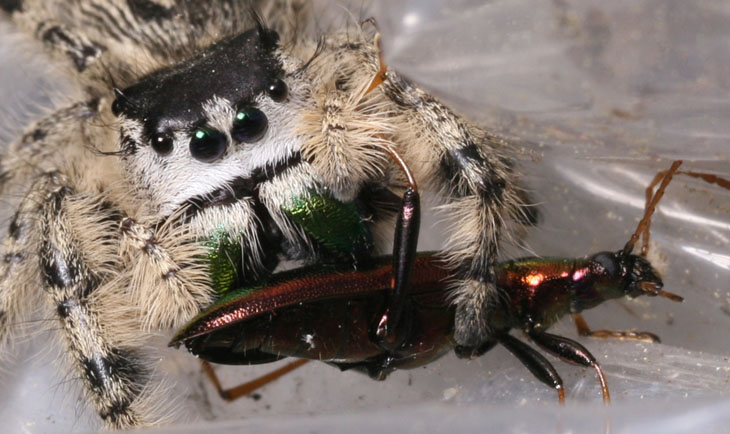




















































 We haven’t done red in a while, and it’s a color fairly well underrepresented in my stock, mostly because I dislike it – which is weird. Why should we like or dislike any one color over another? What thing in our brains is responsible for this? I mean, I can see the evolutionary benefits of recognizing bright colors as signifying ripe fruit or good weather and so on, but why any one particular color? In my case at least, it has nothing to do with not liking strawberries or tomatoes…
We haven’t done red in a while, and it’s a color fairly well underrepresented in my stock, mostly because I dislike it – which is weird. Why should we like or dislike any one color over another? What thing in our brains is responsible for this? I mean, I can see the evolutionary benefits of recognizing bright colors as signifying ripe fruit or good weather and so on, but why any one particular color? In my case at least, it has nothing to do with not liking strawberries or tomatoes…
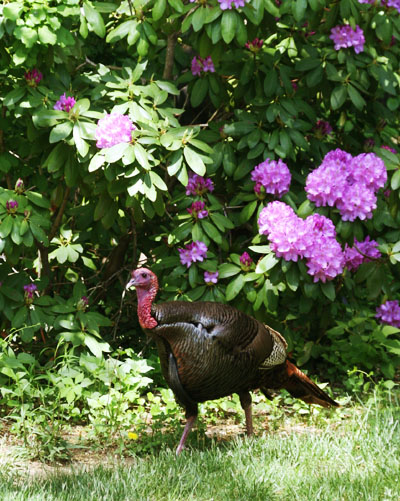 This was family-related stuff, so there was little opportunity to chase photos – I would have liked to have gotten back to
This was family-related stuff, so there was little opportunity to chase photos – I would have liked to have gotten back to 

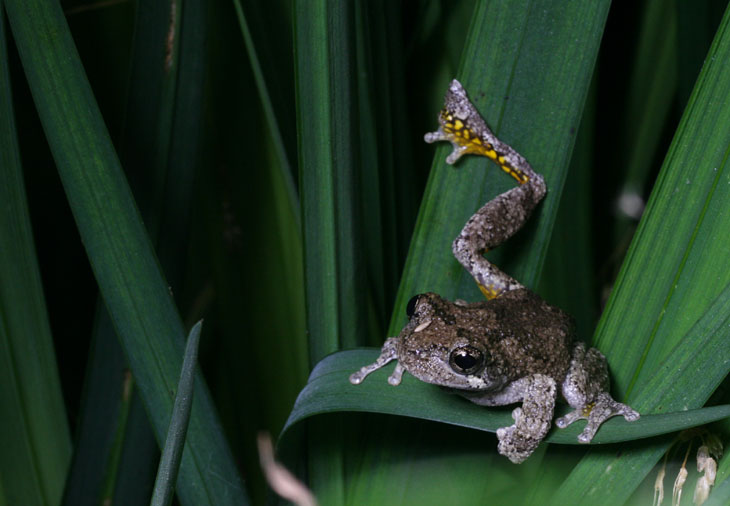
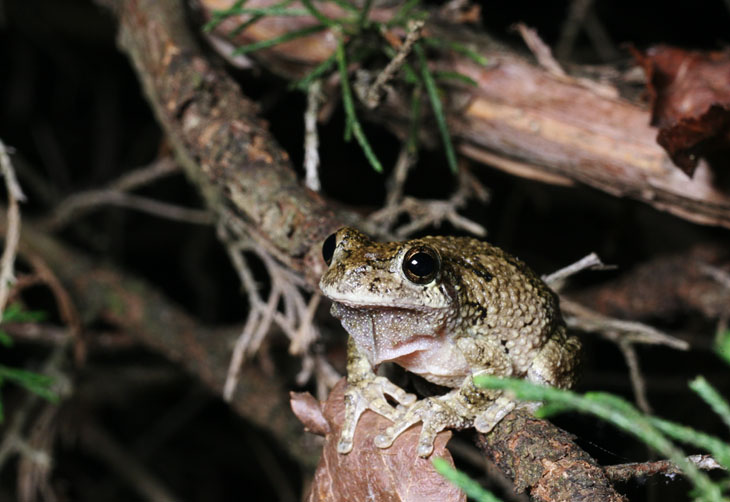
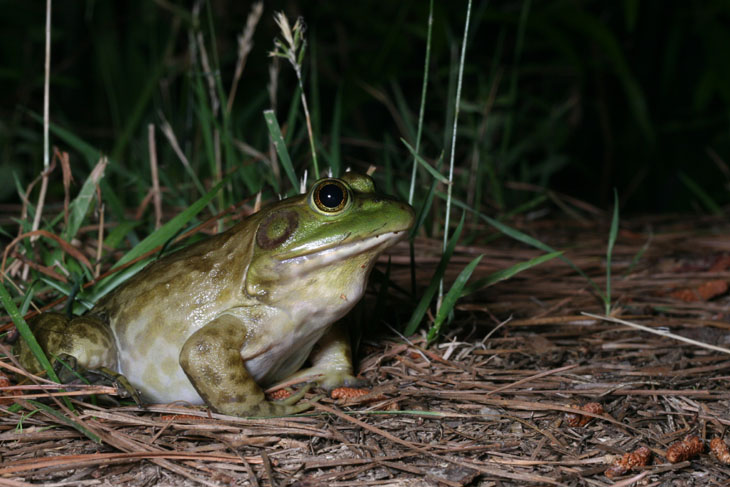

 It took me a while to determine what this tree is, even though it resides in our backyard (the former owners didn’t provide a tree legend, if you can imagine that.) It’s an American sycamore, Platanus occidentalis. Though the background doesn’t really give that impression, this was taken on a rainy day in the fall, when the rain had brought out the curious coloration of the bark sharply – I won’t swear that’s one of its own leaves hanging off the flaking bark, but it looks about right.
It took me a while to determine what this tree is, even though it resides in our backyard (the former owners didn’t provide a tree legend, if you can imagine that.) It’s an American sycamore, Platanus occidentalis. Though the background doesn’t really give that impression, this was taken on a rainy day in the fall, when the rain had brought out the curious coloration of the bark sharply – I won’t swear that’s one of its own leaves hanging off the flaking bark, but it looks about right.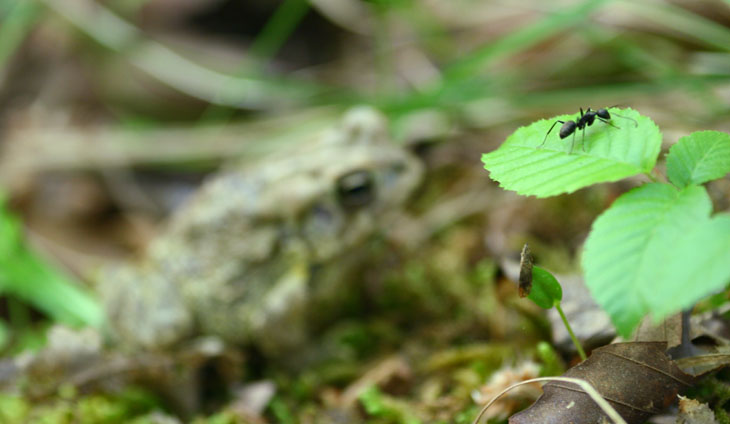
 First off, let me just say that in the time I’ve been doing this blog, both of the species seen here have had their scientific names changed, because I guess taxonomists get bored. Actually, I know it’s because new information regarding relation and genetics and all that is discovered and the changes are made for accuracy, but for those of us who strive to include the scientific names, it does get rather taxing (Ha! Did you catch that? Taxing. Taxonomy. Why am I withering away here when there are all these comedy clubs begging for such talent?) The fellow at top (the one out of focus – I’m being fartsy again) is still an American toad, but now known as an Anaxyrus americanus rather than a Bufo americanus, while the embarrassed dude at right, an Amercian five-lined skink, went from being an Eumeces fasciatus to a Plestiodon fasciatus. Yes, a dude – the red head denotes a male. But notice, they’re both specifically ‘American’ species. What do you wanna bet it’s those Europeans who are provoking these changes?
First off, let me just say that in the time I’ve been doing this blog, both of the species seen here have had their scientific names changed, because I guess taxonomists get bored. Actually, I know it’s because new information regarding relation and genetics and all that is discovered and the changes are made for accuracy, but for those of us who strive to include the scientific names, it does get rather taxing (Ha! Did you catch that? Taxing. Taxonomy. Why am I withering away here when there are all these comedy clubs begging for such talent?) The fellow at top (the one out of focus – I’m being fartsy again) is still an American toad, but now known as an Anaxyrus americanus rather than a Bufo americanus, while the embarrassed dude at right, an Amercian five-lined skink, went from being an Eumeces fasciatus to a Plestiodon fasciatus. Yes, a dude – the red head denotes a male. But notice, they’re both specifically ‘American’ species. What do you wanna bet it’s those Europeans who are provoking these changes?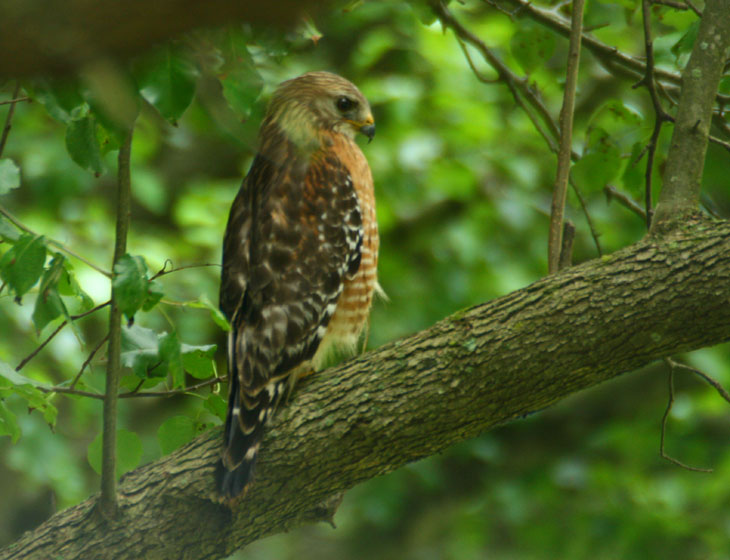
 Now, I may be partially to blame for the hawk’s behavior here, though wholly without intention. I have been working on a small pond in the backyard, partially ornamental, partially to attract photo subjects. It’s far from done, but I’ve placed the pond liner and filled it with water to get it settled in place, adding a filter to help control its use as a mosquito breeding ground. A few days back, I was made aware that it was already serving its purpose when I heard a loud plop as I approached, quickly determining that we now had a resident frog – I took it to be a leopard frog at first, but the markings indicate that it’s a green frog instead. I think it’s going to be one of those days – green frogs used to be Rana clamitans, but are now Lithobates clamitans…
Now, I may be partially to blame for the hawk’s behavior here, though wholly without intention. I have been working on a small pond in the backyard, partially ornamental, partially to attract photo subjects. It’s far from done, but I’ve placed the pond liner and filled it with water to get it settled in place, adding a filter to help control its use as a mosquito breeding ground. A few days back, I was made aware that it was already serving its purpose when I heard a loud plop as I approached, quickly determining that we now had a resident frog – I took it to be a leopard frog at first, but the markings indicate that it’s a green frog instead. I think it’s going to be one of those days – green frogs used to be Rana clamitans, but are now Lithobates clamitans…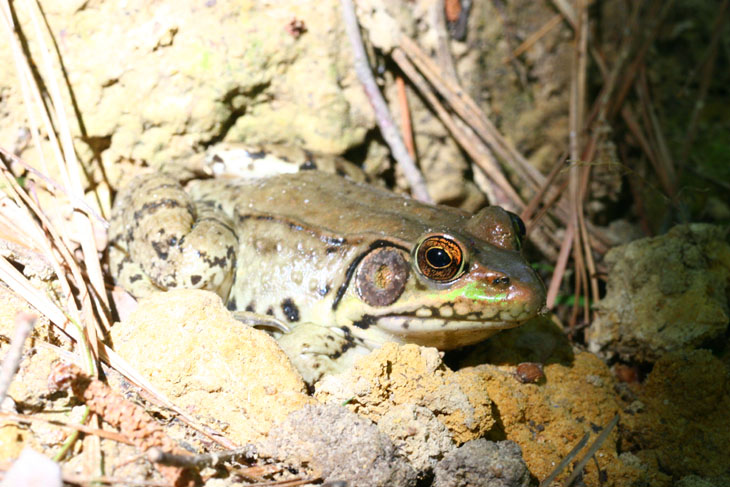
 On an excursion to the river the other day with the unimpeachable Al Bugg, one of the things I was keeping an eye out for, again, were the snakes. Surprisingly, we’d been out for a couple of hours before I spotted a 1.5 meter black rat snake (Elaphe obsoleta– no, goddammit, it’s now a Pantherophis obsoleta. I mean, come on!) Now, I know wildlife should be left alone and not disturbed, but I’m rather bad about snakes; if I can capture them, I often will, just to examine them, and will take any given opportunity to demonstrate to anyone who should be around that few species present the faintest danger. If they appear to have eaten recently, or are engaged in amorous pursuits or things of that nature, I’ll leave them be, but if there seems little chance of interrupting them during crucial times I often won’t hesitate. The rat snake was quite mellow, as they often are, and made no attempt to bite, so we did a quick photo opportunity. And yes, I’m working on getting Mr. Bugg to dress more appropriately for stalking wildlife – he’s a UNC fan and often wishes to make this unmistakable.
On an excursion to the river the other day with the unimpeachable Al Bugg, one of the things I was keeping an eye out for, again, were the snakes. Surprisingly, we’d been out for a couple of hours before I spotted a 1.5 meter black rat snake (Elaphe obsoleta– no, goddammit, it’s now a Pantherophis obsoleta. I mean, come on!) Now, I know wildlife should be left alone and not disturbed, but I’m rather bad about snakes; if I can capture them, I often will, just to examine them, and will take any given opportunity to demonstrate to anyone who should be around that few species present the faintest danger. If they appear to have eaten recently, or are engaged in amorous pursuits or things of that nature, I’ll leave them be, but if there seems little chance of interrupting them during crucial times I often won’t hesitate. The rat snake was quite mellow, as they often are, and made no attempt to bite, so we did a quick photo opportunity. And yes, I’m working on getting Mr. Bugg to dress more appropriately for stalking wildlife – he’s a UNC fan and often wishes to make this unmistakable.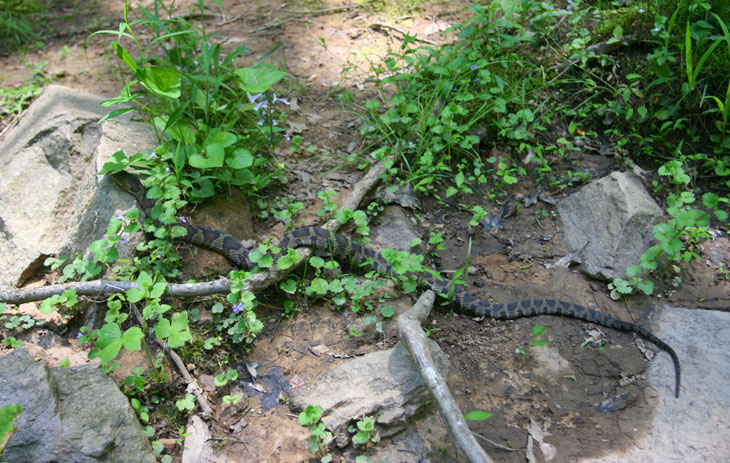

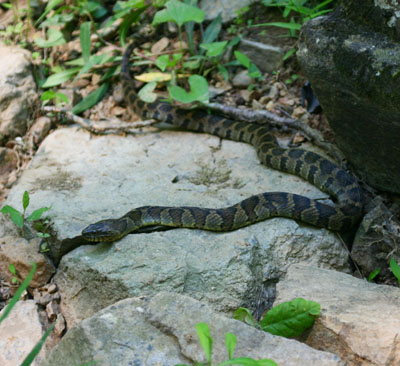 On the return leg a half-hour later, I pointed out the spot as we passed it, and was asked if we would see the same snake. My answer was negative, because we’d spooked it enough to make it think the area was hazardous, and besides it had crossed over. So much for my behavioral predictions. This was waiting about three meters from where we’d had the first encounter.
On the return leg a half-hour later, I pointed out the spot as we passed it, and was asked if we would see the same snake. My answer was negative, because we’d spooked it enough to make it think the area was hazardous, and besides it had crossed over. So much for my behavioral predictions. This was waiting about three meters from where we’d had the first encounter.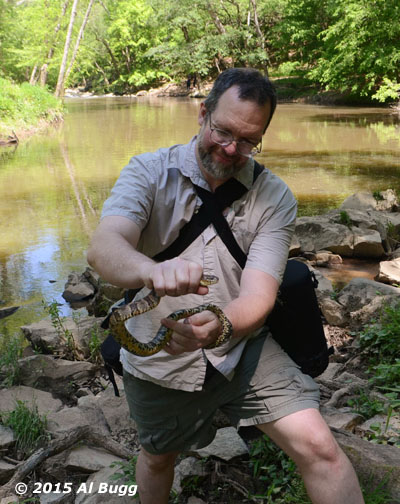 My grip is not half as fierce as this photo makes it seem – basically, firm enough to prevent it from escaping but not even enough to prevent it from squirming. I mentioned before that this species is aggressive, and because I didn’t initially grab it where I should’ve, it was able to demonstrate this trait nicely, biting me three times as well as smearing my forearm with feces (a very common defensive act of snakes, as well as a few other species.) Snake teeth are sharp but ridiculously short, only used for gripping in the non-venomous species, so there was blood as proof, but that’s about all. Snake shit, on the other hand, has a very distinctive odor and does not go away easily, so I received the benefit of that until I got home.
My grip is not half as fierce as this photo makes it seem – basically, firm enough to prevent it from escaping but not even enough to prevent it from squirming. I mentioned before that this species is aggressive, and because I didn’t initially grab it where I should’ve, it was able to demonstrate this trait nicely, biting me three times as well as smearing my forearm with feces (a very common defensive act of snakes, as well as a few other species.) Snake teeth are sharp but ridiculously short, only used for gripping in the non-venomous species, so there was blood as proof, but that’s about all. Snake shit, on the other hand, has a very distinctive odor and does not go away easily, so I received the benefit of that until I got home. Unfortunately, the autofocus wandered to the background on Mr. Bugg for this shot, and he didn’t get any others for security, so the detail is lacking here, but you’re seeing the horrendous damage to my hands from the bites. Actually, you can only see one, the slow-oozing blood on the middle finger of the right hand; there’s another bite on the base of the left thumb, which is why I’m holding my hands close together like that, but with the focus off you can’t even make out the tiny red spots. I did more damage to myself working in the yard earlier. In other words, big fat hairy deal, and this was with a provoked bite. Had I not grabbed it, it might have happened only if I’d stepped on it instead.
Unfortunately, the autofocus wandered to the background on Mr. Bugg for this shot, and he didn’t get any others for security, so the detail is lacking here, but you’re seeing the horrendous damage to my hands from the bites. Actually, you can only see one, the slow-oozing blood on the middle finger of the right hand; there’s another bite on the base of the left thumb, which is why I’m holding my hands close together like that, but with the focus off you can’t even make out the tiny red spots. I did more damage to myself working in the yard earlier. In other words, big fat hairy deal, and this was with a provoked bite. Had I not grabbed it, it might have happened only if I’d stepped on it instead.